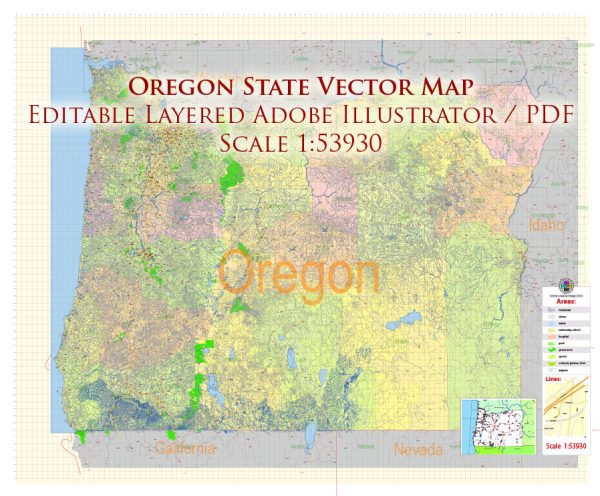Oregon’s urban development history is shaped by a combination of natural resources, economic activities, and social factors. Here is a brief overview of key aspects of Oregon’s urban development:
- Indigenous Peoples: Before European settlers arrived, the region now known as Oregon was inhabited by various indigenous tribes, including the Chinook, Nez Perce, and many others. These tribes had established complex societies with unique cultural practices and were intimately connected to the land.
- Early Settlement and Exploration: The Lewis and Clark Expedition in the early 19th century marked the first significant exploration of Oregon by Europeans. Fur trappers and traders followed, establishing trading posts and interactions with indigenous communities.
- Oregon Trail and Migration: The mid-19th century saw a surge in migration to Oregon, primarily due to the Oregon Trail, a wagon route that brought pioneers from the east to the fertile Willamette Valley. This migration significantly increased the population and laid the foundation for urban development.
- Portland: Portland, Oregon’s largest city, played a pivotal role in the state’s urban development. Established in 1845, Portland became a major port and transportation hub due to its location at the confluence of the Willamette and Columbia rivers. The city’s growth was further facilitated by the arrival of the transcontinental railroad in the late 19th century.
- Economic Drivers: Oregon’s early economy was driven by natural resources such as timber, fisheries, and agriculture. Timber became a major industry, leading to the development of logging communities and the expansion of Portland’s port facilities. The state’s diverse geography also supported agriculture, contributing to the growth of towns and cities.
- Industrialization and Urbanization: The late 19th and early 20th centuries witnessed industrialization and increased urbanization. Cities like Portland and Eugene saw the rise of manufacturing industries, and the expansion of transportation networks, including roads and bridges, further connected urban centers.
- Post-WWII Growth: After World War II, Oregon experienced significant population growth and suburbanization. The construction of highways and increased automobile usage led to the development of suburbs around major cities. Portland, in particular, embraced urban planning initiatives, including the establishment of a light rail system and green spaces.
- Environmental Consciousness: Oregon has been a pioneer in environmental consciousness and urban planning. The state has implemented land-use planning policies to protect agricultural lands and control urban sprawl. Portland, in particular, is known for its commitment to sustainability, with initiatives like public transportation, bike-friendly infrastructure, and urban growth boundaries.
- Technology and Innovation: In recent decades, Oregon has become a hub for technology and innovation. Cities like Portland and Eugene have attracted tech companies and startups, contributing to the state’s economic diversification.
Overall, Oregon’s history of urban development reflects a complex interplay of natural resources, migration, economic activities, and a commitment to environmental sustainability. The state continues to evolve, balancing growth with a desire to preserve its unique natural and cultural heritage.


 Author: Kirill Shrayber, Ph.D.
Author: Kirill Shrayber, Ph.D.